Humanities/Arts Exam > Humanities/Arts Notes > History Class 11 > Cheat Sheet: Changing Cultural Traditions
Cheat Sheet: Changing Cultural Traditions | History Class 11 - Humanities/Arts PDF Download
The Renaissance (14th–17th centuries), meaning "rebirth," was a cultural movement reviving ancient Greek and Latin culture, first in Italy (Rome, Venice, Florence). Coined by Jacob Burckhardt in 1860, it emphasised humanism, individuality, and challenged societal superstitions, deeply impacting social, political, and economic life.
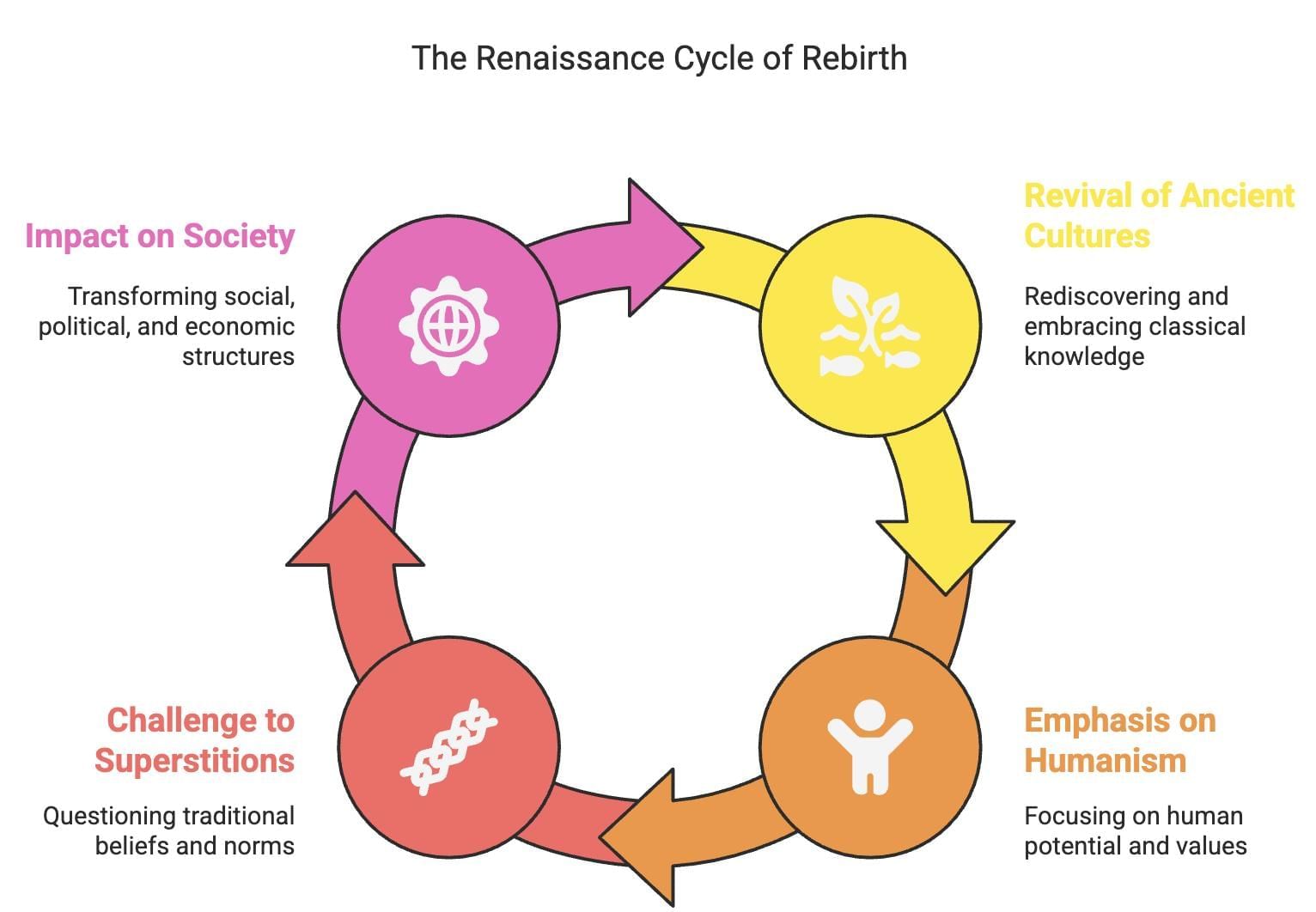
Key Concepts
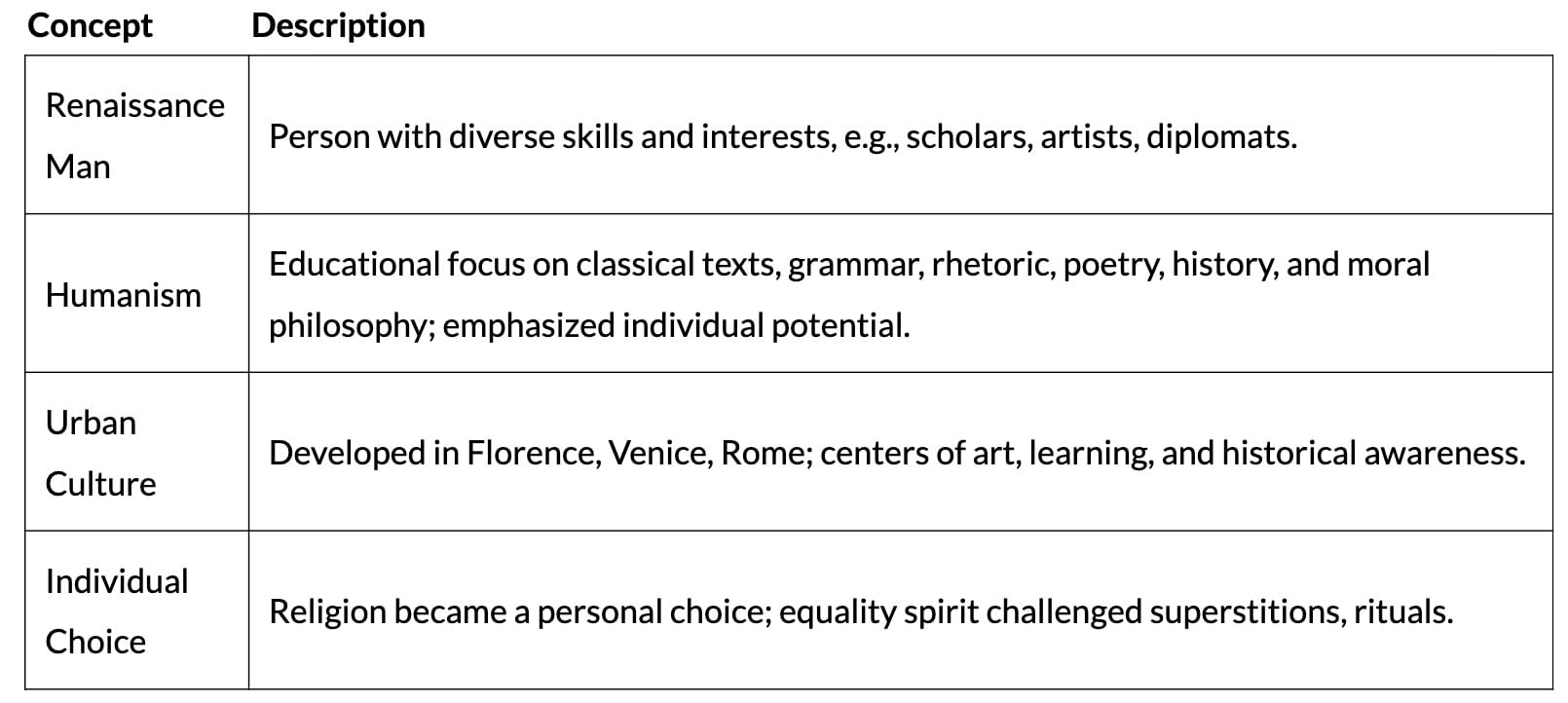
Revival of Italian Cities
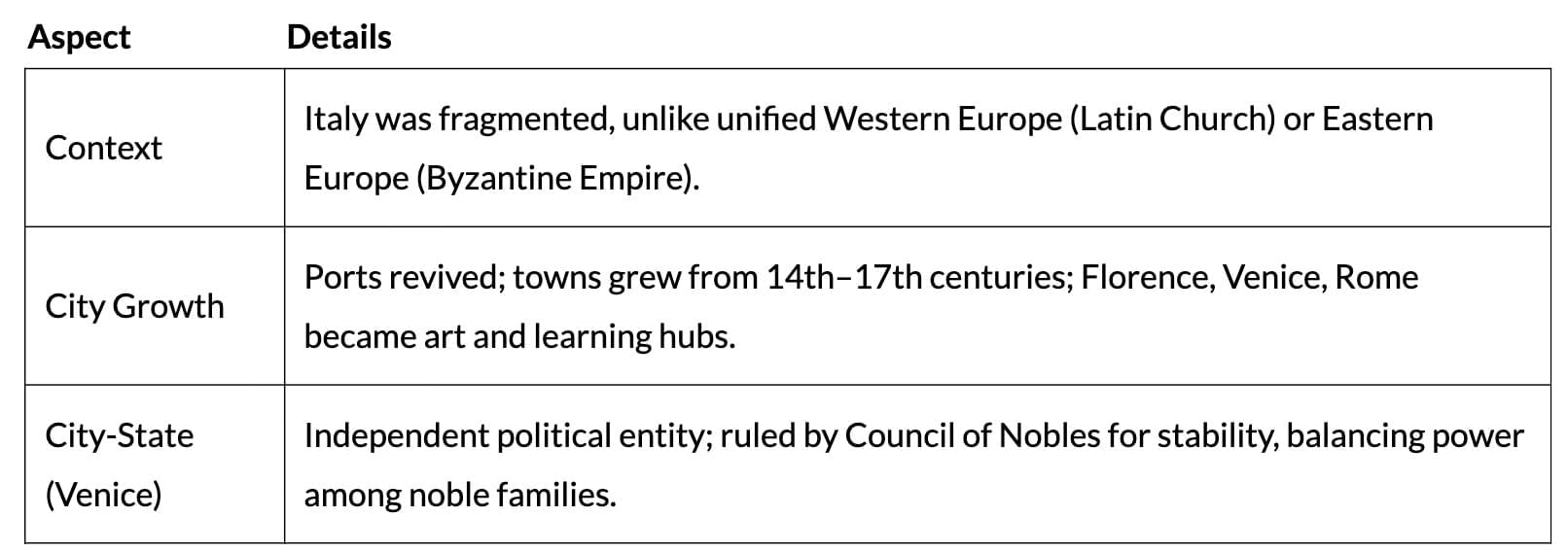
Printing Press
- Invention: Johannes Gutenberg, 1455; first press by Caxton in Europe, 1477.
- Impact: Increased book production, spread education, and enabled rapid dissemination of ideas.
Universities and Humanism
Universities

Humanism
- Definition: Educational approach beyond religious teachings; termed in the 19th century.
- Focus: By early 15th century, humanists taught grammar, rhetoric, poetry, history, and moral philosophy.
- Northern Europe: Church members adopted humanism, e.g., Thomas More (1478–1535), who urged a simpler Christian faith.
- Notable Figures: Dante Alighieri (1265–1321, religious works), Giotto (1267–1337, realistic portraits).
Humanist View of History
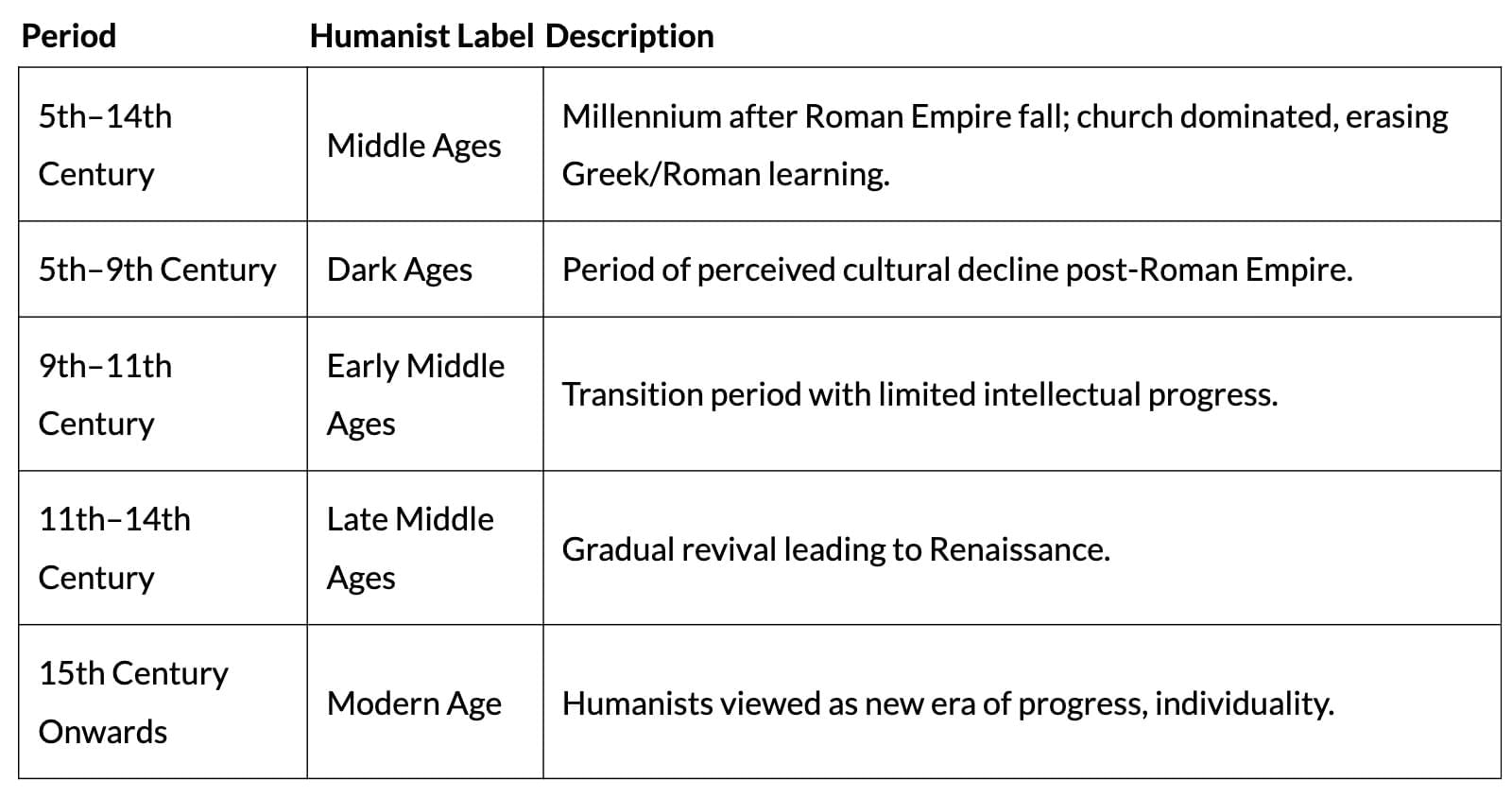
Arab Contributions to Science and Philosophy

Artists and Realism
- Approach: Art transmitted humanist ideas; focused on realistic, proportionate figures.
- Key Figures: Donatello (1386–1466, lifelike statues); Andreas Vesalius (Padua professor, first human dissection).
- Techniques: Geometry for perspective, oil painting for richer colours, study of anatomy, physics, and beauty.
- Influences: Chinese, Persian art via Mongols; realism continued until the 19th century.
Architecture

First Printed Books
- Development: Gutenberg’s press (1455) printed 150 Bibles; Caxton’s press (1477) in Europe.
- Impact: Mass production of Latin classical texts; enabled widespread reading, idea dissemination; reduced reliance on lecture notes.
- Influences: Chinese printing techniques via Mongols; also impacted firearms, compass, abacus.
New Concept of Human Beings
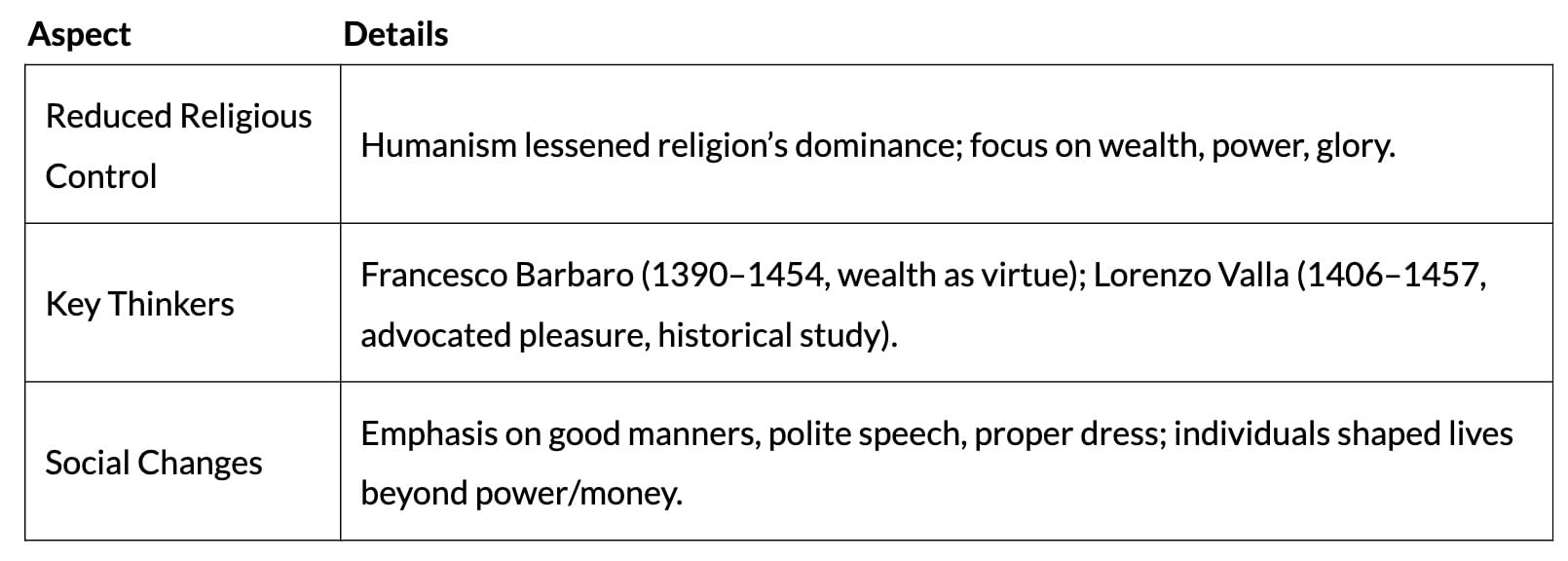
Aspirations of Women
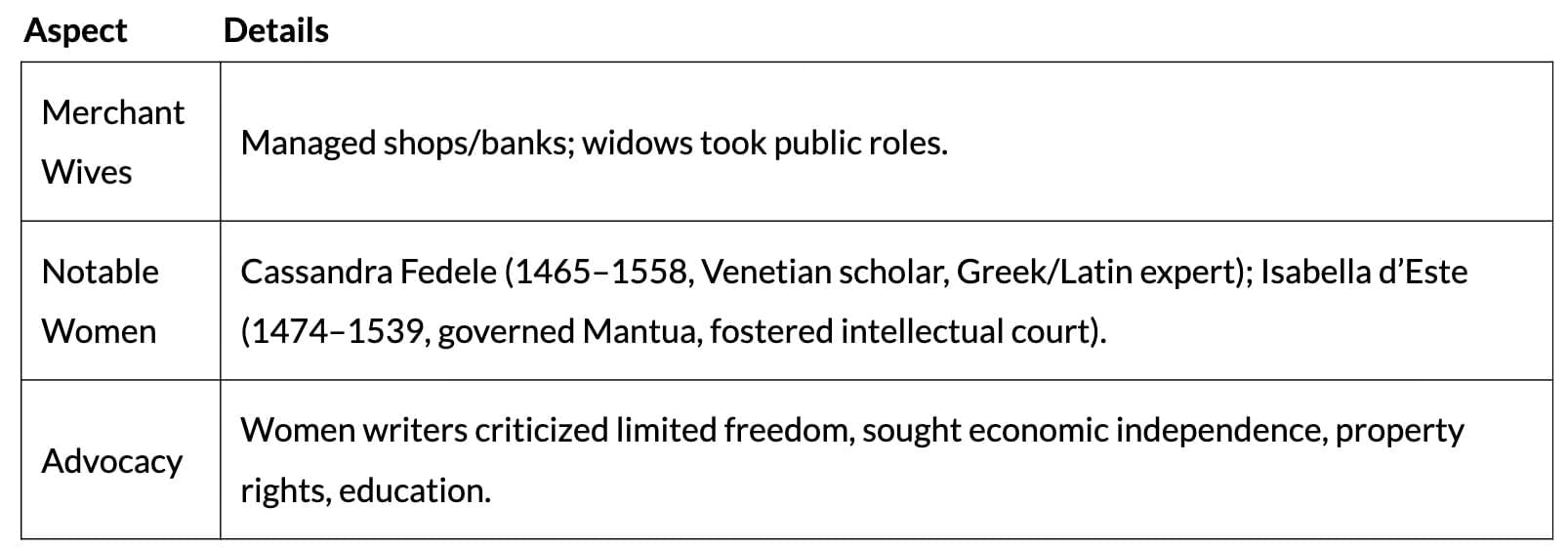
Debates within Christianity
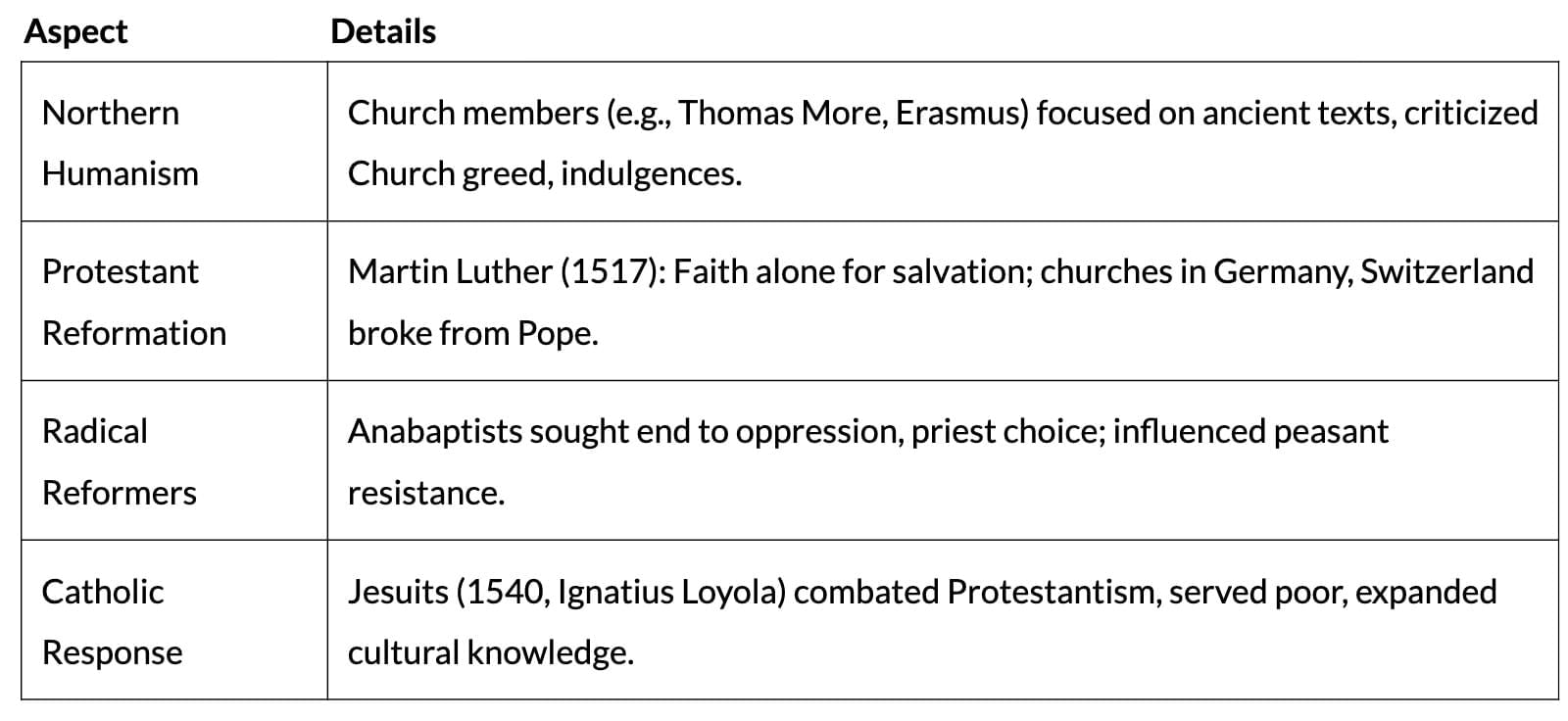
Copernican Revolution
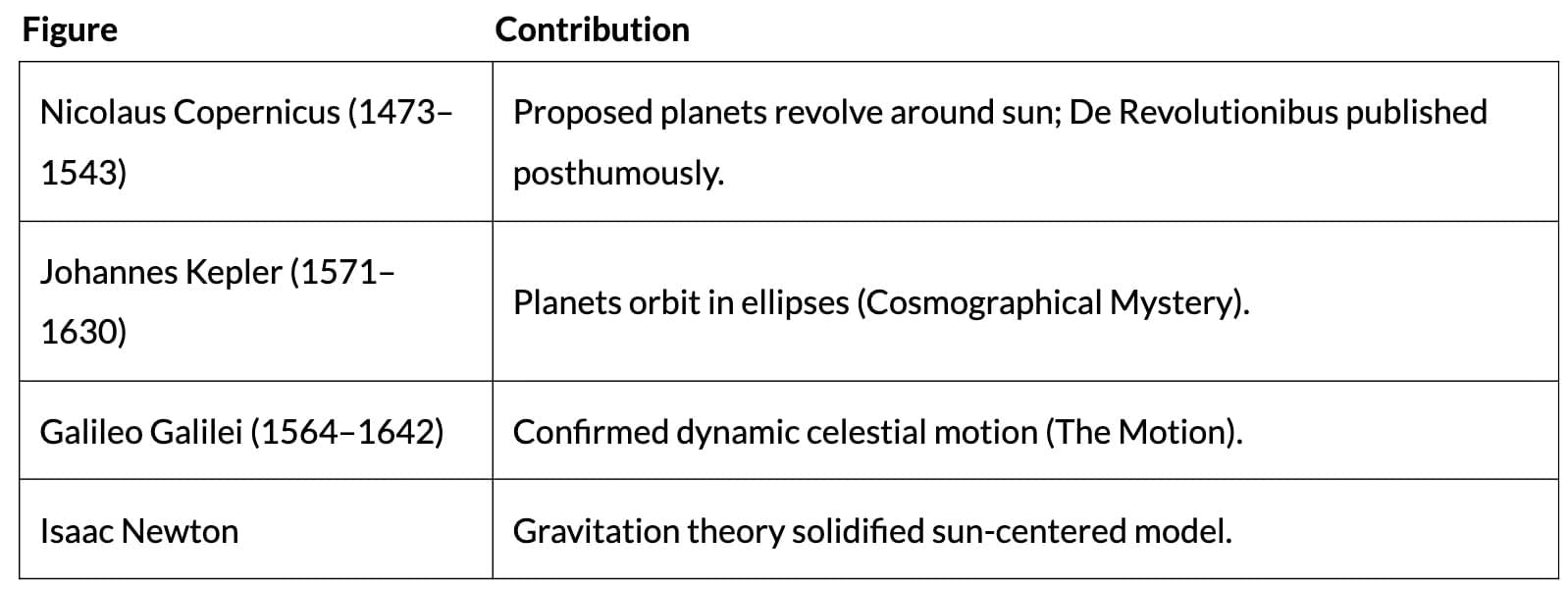
Reading the Universe
- Galileo’s View: Bible for spiritual guidance, not the heavens’ workings; emphasised observation, experiments.
- Scientific Revolution: New methods in physics, chemistry, and biology based on empirical evidence.
- Shift in Belief: Nature as creation source, God more distant.
- Scientific Societies: Paris Academy (1670), Royal Society (1662) popularised experiments, lectures.
Was There a Renaissance in the 14th Century?
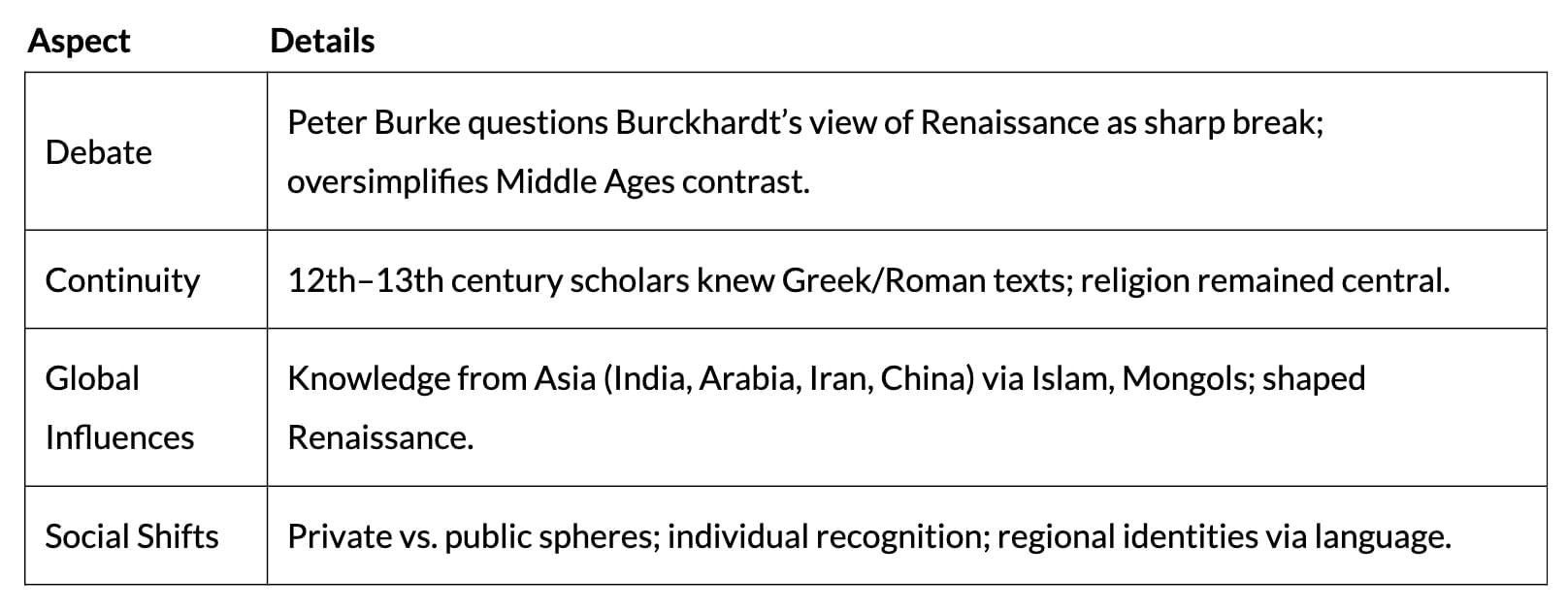
Conclusion
The Renaissance blended classical revival with global influences, fostering innovation in art, science, and humanism. It marked a gradual expansion of cultural and intellectual progress, shaping modern Europe through individual identity and global exchange.
The document Cheat Sheet: Changing Cultural Traditions | History Class 11 - Humanities/Arts is a part of the Humanities/Arts Course History Class 11.
All you need of Humanities/Arts at this link: Humanities/Arts
|
27 videos|125 docs|20 tests
|
FAQs on Cheat Sheet: Changing Cultural Traditions - History Class 11 - Humanities/Arts
| 1. What were the main factors that contributed to the revival of Italian cities during the Renaissance? |  |
Ans.The revival of Italian cities during the Renaissance can be attributed to several key factors. First, the increased trade and commerce resulting from the Crusades led to economic prosperity. Wealthy merchant families, such as the Medici in Florence, invested in art and culture, fostering an environment of creativity. Additionally, the decline of feudalism and the rise of city-states allowed for greater political stability and autonomy, enabling cultural and intellectual growth. The rediscovery of classical texts also spurred interest in humanism, further contributing to the flourishing of these urban centers.
| 2. How did the invention of the printing press impact the spread of knowledge during the Renaissance? |  |
Ans.The invention of the printing press revolutionized the spread of knowledge by making books more accessible and affordable. Prior to its invention, books were laboriously copied by hand, leading to limited availability and high costs. With the printing press, texts could be produced rapidly in larger quantities, allowing ideas to circulate more widely. This facilitated the dissemination of humanist thought, scientific discoveries, and religious texts, ultimately contributing to the democratization of knowledge and the spread of literacy across Europe.
| 3. What is the significance of humanism in the context of Renaissance culture and education? |  |
Ans.Humanism played a crucial role in shaping Renaissance culture and education by emphasizing the value of human beings, individual potential, and the study of classical texts. It shifted the focus from purely religious themes to include subjects like literature, philosophy, and history, which were seen as vital for developing well-rounded individuals. This movement encouraged a spirit of inquiry, critical thinking, and a belief in the importance of personal experience and observation, which laid the foundation for modern education and the sciences.
| 4. In what ways did Arab contributions influence European science and philosophy during the Renaissance? |  |
Ans.Arab contributions significantly influenced European science and philosophy during the Renaissance by preserving and expanding upon ancient Greek and Roman knowledge. Scholars in the Islamic world translated classical texts into Arabic, adding their own insights and discoveries in fields such as mathematics, astronomy, and medicine. The introduction of concepts like algebra and the numeral system from the Arab world facilitated advancements in European education and science. This exchange of knowledge was crucial in bridging the gap between antiquity and the modern age.
| 5. How did artists during the Renaissance achieve realism in their works? |  |
Ans.Artists during the Renaissance achieved realism through several techniques that emphasized observation and the study of human anatomy. They employed linear perspective to create depth and dimension in their paintings, making scenes appear more lifelike. The use of chiaroscuro, or the contrast of light and shadow, helped to enhance three-dimensionality. Additionally, artists studied the human form meticulously, often using live models, which allowed them to depict emotions and physical details with remarkable accuracy. This dedication to realism marked a significant departure from the more stylized representations of earlier periods.
Related Searches
















